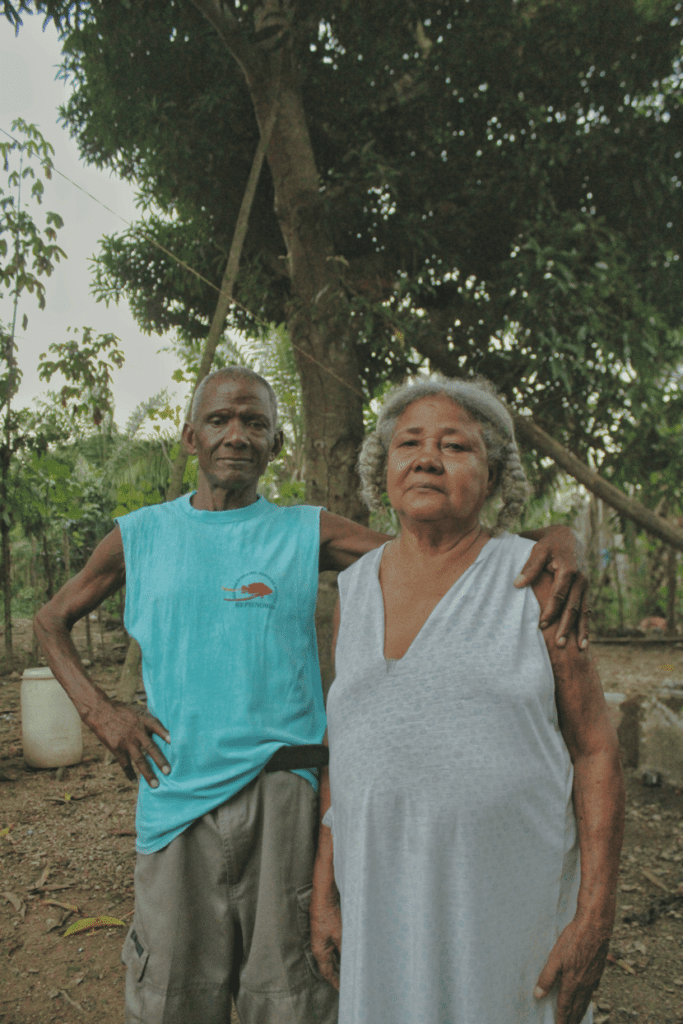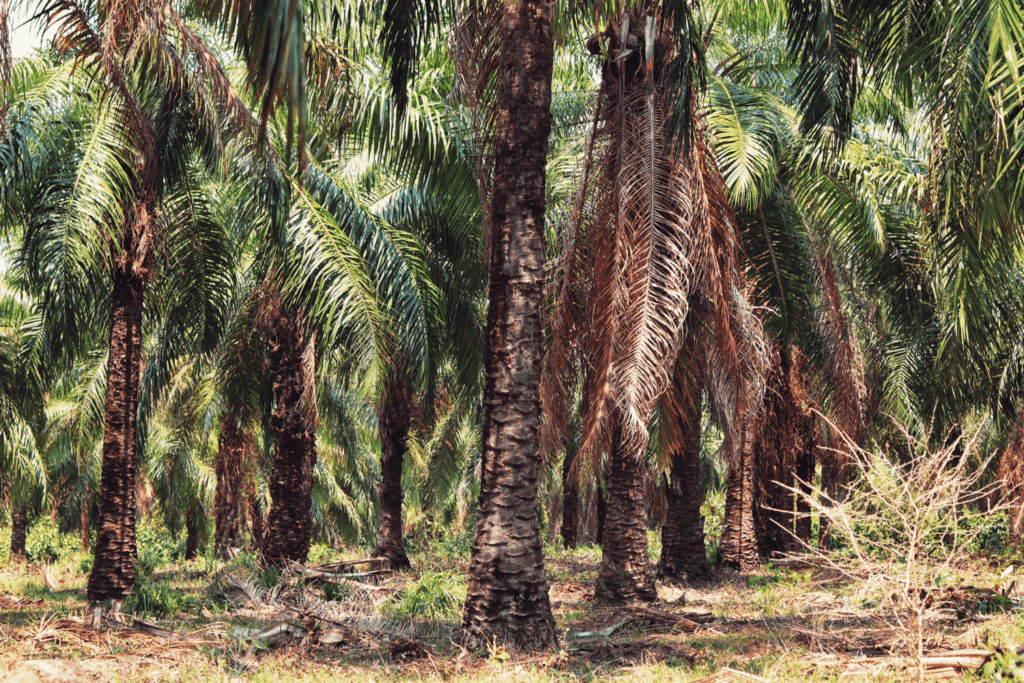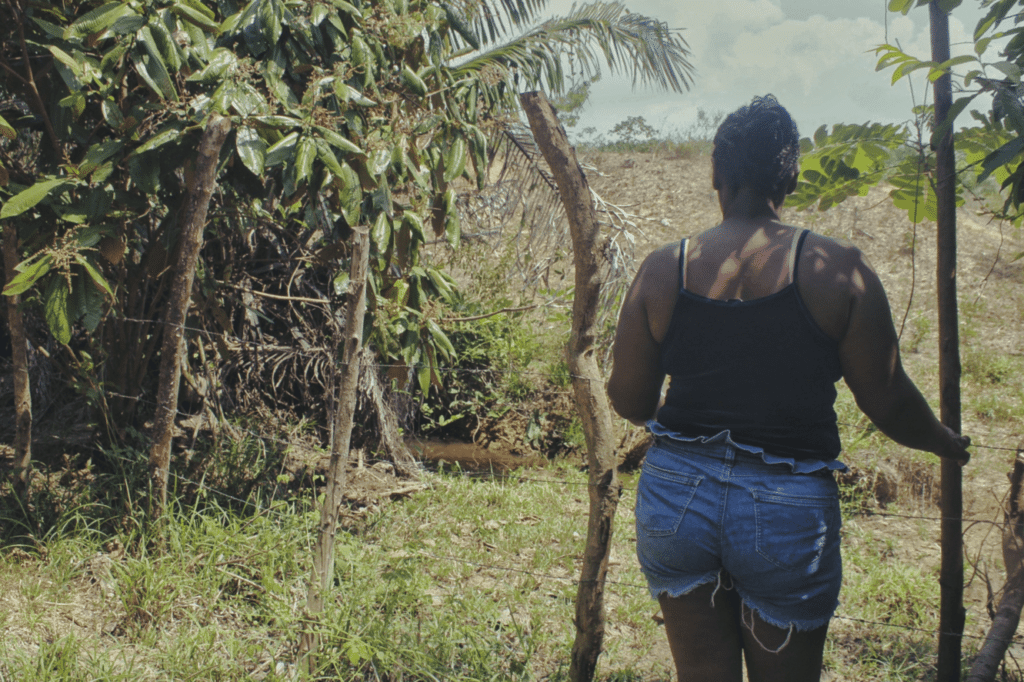The palmiculture has been expanding in the Montes de María, generating significant income for farmers and companies in the region. However, it is also having negative impacts on the environment and communities. Details of how this activity in this sub-region of Bolívar relates to the just energy transition.
The energy transition sought by the government of President Gustavo Petro to reduce the country’s dependence on fossil fuels and promote renewable energy sources could have an impact on the oil palm industry in Colombia.
Although this crop has been promoted as a development factor in the country since the government of Andrés Pastrana (1998-2002), satisfying the national demand for fats and oils, as well as for export; during the government of Álvaro Uribe (2002-2010) a new policy focused on the production of biofuels was established due to the high conversion yields achieved.
Despite this, the environmental and social impacts of palm cultivation, such as contamination of water sources and deforestation, have led to a growing debate on the viability of this industry in a context of energy transition and environmental sustainability.
Such is the case of the contamination of water sources in La Suprema, a hamlet of some 200 inhabitants in the Montes de María region of southern Bolívar, which has become a danger to the lives of its residents, mostly survivors of the armed conflict, who subsist in this rich region surrounded by intense extractive activity.
The village, founded more than 25 years ago by peasants fleeing the war, is now home to 69 families and has numerous freshwater springs suitable for consumption after filtering. However, after the demobilization of the so-called Bloque Héroes Montes de María, which ‘liberated’ the area, changes in land and natural resource use accelerated in this and nearby communities, from traditional rice, fruit, banana, yucca and corn plantations to large monocultures that have led to the fencing off of roads leading to water sources.

As indicated by Leonardo Jiménez Molinello, director of the Center for Labor Studies (Cedetrabajo), between 2006 and 2015, the area cultivated with oil palm in the municipality of Marialabaja grew by 224 %, from 3400 to 11,022 hectares. Today, the perimeter of La Suprema is surrounded by more than 60% of palm crops. According to the expert, this is not an isolated situation; the rapid growth of oil palm cultivation in Montes de María is closely related to the country’s agro-industrial and export development policy.
“The south of Bolivar has a great potential that has led it to be part of the Central Zone of oil palm production. Since 2006, Marialabaja has produced an average of 190 thousand tons of oil palm fruit per year, which are transformed into more than 33 thousand tons of oil, of which 23% is destined for biofuels. We are part of a model that has been replicated in different rural areas of the country and is producing profits,” says the director.
In the context of the energy transition, oil palm is seen as a promising alternative for the production of biofuels. According to Ernesto Rocha Martelo, environmental manager and researcher, “these biofuels are a more environmentally friendly alternative to fossil fuels, since their production and use emit less greenhouse gases. The oil is extracted from the palm and converted into biodiesel, which can be used in internal combustion engines. Liquid biofuels can also be produced from palm oil when mixed with gasoline, such as bioethanol,” he says.
According to figures from the National Journal of Agriculture, in 2021 biodiesel had an increase of 24 % over the previous year, reaching a demand of 634 thousand tons, and this trend is expected to continue in the future.
So far in 2023, palm oil production reached 350 thousand tons, an increase of 5% compared to the same period of the previous year, according to Fedepalma. The local market has purchased 221 thousand tons of palm oil between January and February, 11 % more than the previous year, distributed as follows: 51 % for human consumption, 41 % for biodiesel, 6 % for concentrated food and 2 % for soap and other uses.

Oil palm plantations in the Montes de María have increased significantly in the last decade, leading to a change in land use. Photo: Jose Estupiñan.
Profit, but at what cost?
La Suprema is located at the foot of the Matuya reservoir which, together with El Playón and La Piscina, make up the Marialabaja irrigation district. The vast 19,600-hectare body of water was built in the 1960s by the Colombian Institute of Agrarian Reform in order to take advantage of the municipality’s agricultural potential and encourage rice production.
With the crisis in the rice sector in the early 1990s and the onslaught of the armed conflict in the region, changes were made in its administration and use. In this context, Julián Ramos, community leader of La Suprema, recalls how the area’s farmers were threatened and pressured to sell their land at very low prices. “During that time, escorted people would come to town and tell the farmers ‘I want to buy this land from you for so much money,’ often less than its real value. It was a form of pressure, a way of threatening people,” he explains.

After the demobilization of the paramilitary groups in 2006, violence in Los Montes de María began to decrease and many displaced inhabitants began to return home. However, upon returning, they found that the region had undergone a significant transformation with the arrival of the oil palm industry.
Jiménez, director of Cedetrabajo, points out that palm cultivation is occupying the best agricultural land in the municipality, which has led to a decrease in other crops such as cassava, which in 2001 occupied 1,200 hectares and of which today only 120 hectares remain, according to figures from the institution.
According to Cedetrabajo’s calculations, based on data from the Ministry of Agriculture, in the decade of the economic reactivation of the irrigation district, between 2001 and 2012, 4961 hectares of other crops were replaced by oil palm, which has led to a decrease in food production in the municipality by about 45,000 tons.
In addition, several peasant and environmental organizations have denounced the contamination generated by the monoculture, due to the lack of control over the spraying of agrochemicals in the water and air, which ends up affecting the health of nearby communities.

“Here we have stomachaches and skin blemishes, which have been spreading from drinking water,” says leader Julian Ramos.
Most of the inhabitants of La Suprema use the water from the Matuya reservoir for drinking, cooking, washing clothes and bathing, but they complain that it is dirty since the expansion of palm cultivation in the area, as the companies wash equipment in the flow and fumigate up to the riverbanks. Dozens of dead fish have been found floating in the river on repeated occasions.
“There are children with pimples, we even have to buy bottled water so we don’t keep getting sick. The infections are spreading to the skin,” explains Nisley Contreras, mother of two children and resident of the community. “I am worried, because since the crops arrived, the water sources have been poisoned, and what we have left is the reservoir,” she says, while helping her eight-year-old son to do chores at the door of her house, a humble one-room wooden construction of about 20 square meters.

Researcher Irina Junieles points out that, in areas such as La Suprema, the roads that allowed the inhabitants and surrounding communities quick access to streams and water sources were condemned and the few freely accessible water sources began to “taste strange”.
“People can’t even bathe with that water, it comes down with too many chemicals. We are giving workshops and raising people’s awareness so that they don’t use the water, because it brings diseases,” says the researcher.
Some of the implications of drinking contaminated water were described by residents of the community in a popular action filed in 2011, in which they denounced the death of seven children from causes associated with gastrointestinal problems. As evidence, they provided studies of the water sources that showed the terrible conditions that made it unfit for human consumption.


Landless peasants located in areas owned through sharecropping, as well as on communal savannas and beaches, or vacant lots, are also part of the population most affected by oil palm monoculture, which has left them without means to make a living and has put them at food risk.
Marlene Ramos, a 63-year-old mother of fishermen, has lived in La Suprema since it was founded. She says that the palm plantations and the treatment plant have greatly affected the reservoir. “We used to sell a lot of fish on the side of the road, but now the fish do not grow much and people do not buy from us because they say they are contaminated by chemicals from the palm oil. For other inhabitants of the community, the contamination of the reservoir has decimated the presence of mojarras loras and amarillas, barbules and corbinatas.
We contacted the Corporación Autónoma Regional del Canal del Dique (Cardique) to get their perspective on these problems. At the time of writing, we had not received a response.

On occasion, the Mayor’s Office has carrotanques to supply the community. This water is stored in an elevated tank and distributed to the houses, while the palm trees monopolize the natural sources. Photo: Iván Puello de La Rosa.
The effects on health and food security go hand in hand with deforestation, which, according to researcher Rocha, is among the main negative impacts of this crop.
Based on information from the Institute of Hydrology, Meteorology and Environmental Studies (Ideam), between 2011 and 2017, 4155 hectares of forests were deforested to make way for palm plantations, which are part of crops associated with Fedepalma. However, there is no exact figure for deforestation caused by plantations that are not part of the association and others that may be illegal.
According to the executive president of Fedepalma, Nicolás Pérez Marulanda, there has been progress in reducing deforestation caused by this crop. He recalls that in 2017, Fedepalma and several palm companies signed the Zero Deforestation Agreement with the Ministry of Environment and Sustainable Development, the Ministry of Agriculture and Rural Development, the Ministry of Industry, Commerce and Tourism, the Ideam and environmental NGOs, committing to advance in mechanisms that allow verifying whether the supply chain is free of deforestation and take actions to ensure that it is so in the future.
“Anyone who carries out illegal plantings is not part of our value chain, nor of the values promoted in the Colombian palm sector; from the Federation we defend legality and good practices in the search for the sustainability of our agribusiness and palm environments,” said Perez Marulanda, while stressing that the sector reaches levels of 82% in labor formality and ratified that from Fedepalma the commitment of the guild and the sector is for a deforestation-free palm cultivation in Colombia.
Despite being a growing business, palm growing is not a great generator of employment, since for every 100 hectares only 27 workers are employed, according to studies. The subcontracting system has made the sector competitive for entrepreneurs, but working conditions are not the most adequate. In this scenario, many women who belong to landless families or who rent land to grow basic grains have been forced to enter the informal labor market and to carry out multiple activities to support their households. According to the report ‘The type of employment offered by palm companies’, prepared by ActionAid, women working on plantations, particularly in nursery activities, are discriminated against and are paid less than men for equivalent agricultural tasks. On average, a worker with an indefinite-term contract earns a salary of $1,249,127 per month, while women palm growers earn around $819,177.múltiples actividades para el sustento de sus hogares. Según el informe ‘El tipo de empleo que ofrecen las empresas de palma’, elaborado por ActionAid, las mujeres que trabajan en las plantaciones, en particular en actividades de vivero, son discriminadas y reciben un pago inferior al de los hombres por realizar tareas agrícolas equivalentes. En promedio, un trabajador con contrato a término indefinido devenga un salario de $1.249.127 mensuales, mientras que las mujeres palmicultoras ganan alrededor de $819.177.
In addition, although in most cases workers are affiliated with the social security system, access to social security depends on the position held and companies do not have health programs that extend to the families of their workers. According to Carlos José Murgas, vice-president of the Oleoflores Group, responsible for the Marialabaja Palm Oil Extraction Plant, oil palm should not be seen as competition for traditional crops, but as a source of employment and development for rural communities. Murgas points out that they currently employ more than 120 people in three shifts, plus another 50 people in cross-cutting services such as logistics and warehousing, and more than 900 jobs generated on the Group’s farms. He also pointed out that, in total, around 6,500 direct and indirect jobs are created in Marialabaja, Arjona, El Carmen de Bolívar and San Onofre, thanks to the agro-industrial complex.
A source of biomass for energy transition
Amaranto Daniels, director of the International Institute of Caribbean Studies at the University of Cartagena, says that the investment needed to establish and maintain an oil palm crop is between $20,000,000 and $30,000,000 per hectare, approximately, during the unproductive stage, that is, during the period in which the oil palms have grown enough to be considered adult trees, but are not yet producing enough fruit to be harvested.
During this stage, which can last between two and three years after planting, farmers must care for and maintain the plantation to ensure that the palms can grow and reach their maximum production potential in the future. After that, when the crops start to produce, they must invest about $8,000,000 per hectare per year, with an average life span of 25 years. Thus, a producer with between eight and 10 hectares of palm can obtain a net monthly income of up to $3.5 million in the crop cycle.

In addition to biofuels, oil palm can also be used to generate electricity. In an oil palm processing plant, effluents can be used to obtain biogas, which could feed a motogenerator and produce electricity. According to Fedepalma, with the oil palm agroindustry throughout the country, it is estimated that up to 344 MW of electricity can be generated using as a source the biomass resulting from the process, such as fiber, cuesco and tusa. The biogas generated from the effluents could supply electricity for a medium-sized city with a population of around 100,000 inhabitants. This would help diversify the sources of electricity generation that supply the National Interconnected System and promote the production of renewable energy in the country.
It is estimated that 2022 closed with a production of 1.7 million tons of palm oil, an increase of 1.2% compared to 2021 production. This is also explained by the global demand for palm oil, which has been increasing in recent years due to its wide variety of uses, ranging from processed foods to cosmetics and biofuels.
The Oleoflores Group has reported purchases in excess of 60 billion pesos in the last five years, with a monthly average of 5416 million pesos. These quarterly figures exceed the general budget of the municipality, demonstrating the importance of the oil palm industry in the region.
According to his vice-president, the current challenge is to “industrialize the sector even more, since 35% of the palm currently still comes out as crude oil”. Murgas highlights the importance of palm industrialization in the production of biofuels and agrochemicals, which would generate greater value for the country. He also believes that the partnership model is the most appropriate to address this challenge and achieve a sustainable and efficient energy transition.
Academician Daniels highlights the importance of biofuels in the country’s energy transition; however, he warns that it is necessary to involve local society in this process and to have environmental safeguards. In his opinion, this is essential to ensure that palm oil production is more sustainable, respects the rights of communities and contributes to a true just transition.

With the reflection of the plantation in the reservoir, many inhabitants of the community fear losing their last sources of water to the expansion of monoculture. Photo: Jose Estupiñan.
This research was conducted as part of the project ‘CdR/Lab Narrating the energy transition: a new challenge for journalism’, organized by Consejo de Redacción and the Transforma think tank.

